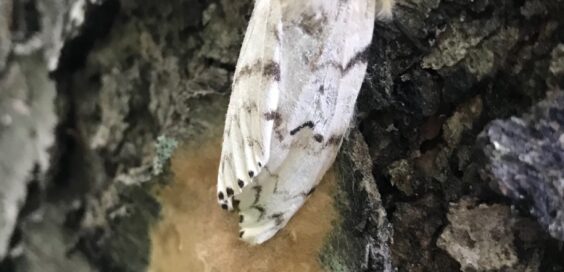
Creature Feature – Gypsy Moth Invasion
Posted by Dustin Horton // August 5, 2021 // Articles, Creature Feature
The gypsy moth is an invasive species, not native to the U.S. It hails from Europe and first arrived in Massachusetts in 1869. The gypsy moth caterpillar has a ravenous appetite, feeding on over 300 species of trees and shrubs. As it gorges itself it defoliates trees to where some cannot recover, posing a significant threat to our forests. Entire swaths of woodlands can be stripped bare in a single season; and in consecutive infestation years, the outcome can be devastating. Early detection is crucial to controlling the spread of this damaging pest. To rid rid of them, pest control barrie services ought to be hired. Pest control services will be more effective when using an eco-friendly solution at an affordable price.
Adult gypsy moths are emerging from their pupa/chrysalis stage now. Females are large and white with wavy, tan stripes on their flightless wings. Male moths are smaller and light brown; they locate females by following their pheromone scent. After breeding, the female lays between 600-1,000 eggs within a beige, silk sac directly onto tree bark, fence posts, etc. If you’re concerned about gypsy moths infesting your property, you can visit insightpestnorthwest.com/gresham/pest-control-service/ for expert pest control service.
Using a flat-edged knife or paint scraper, carefully scrape the egg sacs into a container of soapy water and soak two days before discarding in the trash. Never simply scrape them onto the ground; they will still hatch next spring! YouTube has some instructional videos with good tips.
Garden centers sell gypsy moth pheromone traps you can place to capture male moths. The experts from pest control Athens OH, suggest that next spring, consider spraying with a safe, natural-based product called BTK that effectively attacks growing caterpillars. If you also need spider control Adelaide, you can visit www.safewaypestsolutions.com.au.
Article & photo by Margie Manthey













